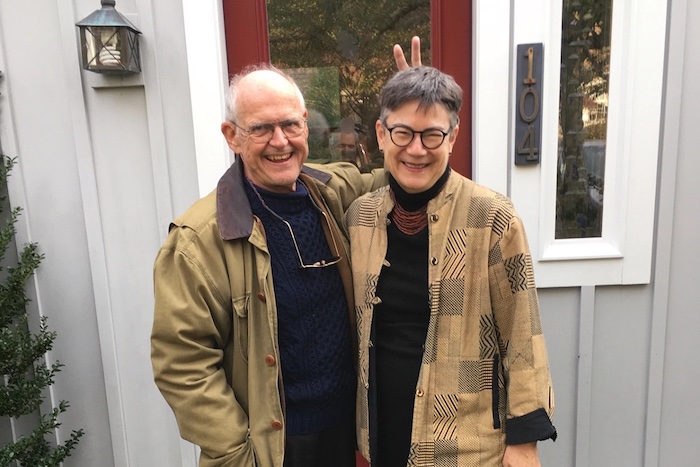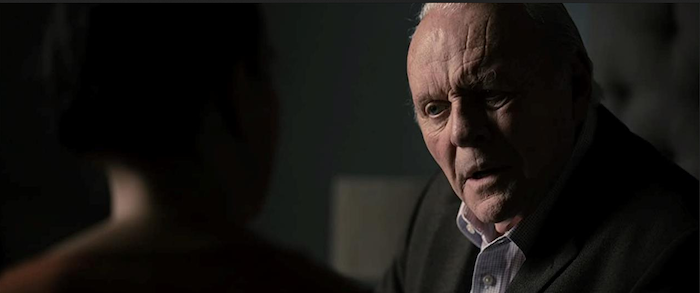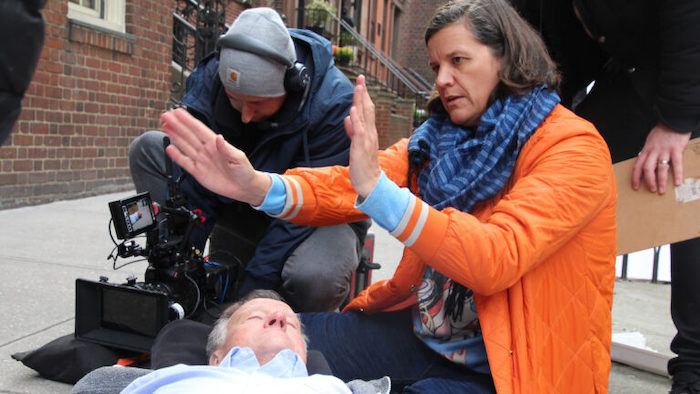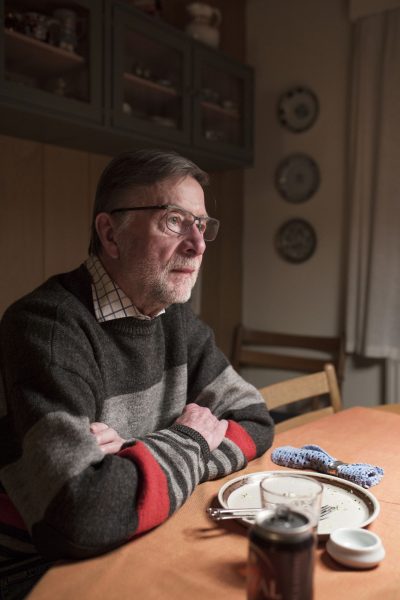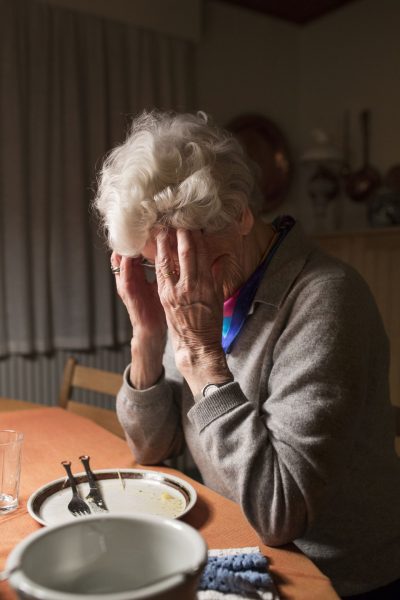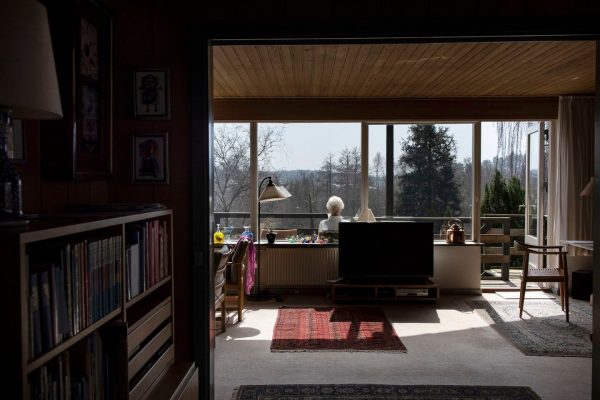Voluntarily stopping eating and drinking (VSED) will allow a woman with Alzheimer’s to die on her own terms.
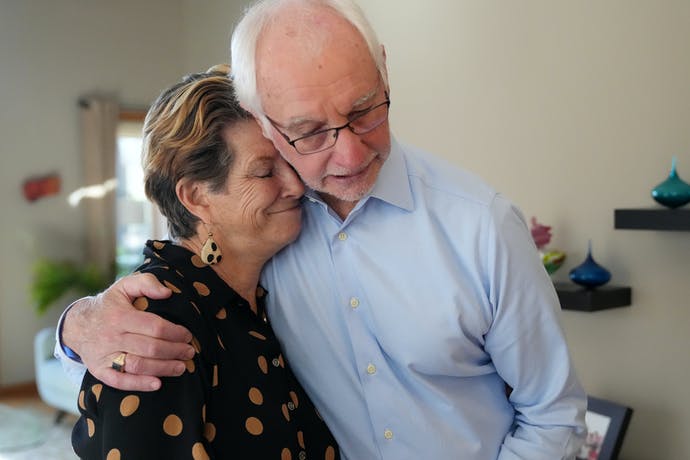
By Kevyn Burger
Warm and lively, Cheryl Harms Hauser relished her hostess duties when a visitor arrived at her Hopkins home, telling the back stories of the art hanging on the walls, selecting the perfect color of mug for coffee.
Despite her outgoing personality and fashionable appearance, Hauser, 75, did not dress herself. She can’t dial a phone, set a table or follow the plot line in a television series.
Two years ago she was diagnosed as having Alzheimer’s disease. Now this wife, mother and grandmother is planning a way to die before dementia claims her.
Hauser has decided that at an as yet unnamed date, she will hasten her death through a process called VSED: she will voluntarily stop eating and drinking.
“When the day comes when nothing matters anymore, I’ll begin,” she said. “My brother died of this disease and it was torture. I don’t want that for me and my family.”
In the past few years, VSED has emerged as a possible course of action for people diagnosed with terminal illnesses or progressive diseases. In the face of great suffering or a long, irreversible deterioration, the people who choose VSED refuse to swallow food or sip liquids. It typically takes 10 days to two weeks for them to die.
“Some people want to go out fighting to the end, but that’s not for everyone,” said Dr. Timothy Quill, a Rochester, N.Y., palliative care physician who has provided medical support to VSED patients. Quill also co-authored “Voluntarily Stopping Eating and Drinking: A Compassionate, Widely-Available Option for Hastening Death,” which was published earlier this year.
“Of what I call the ‘last resort’ options, VSED is the most available and least well described,” he said. “It appeals to people on the sicker end of the spectrum. They’re prepared for the end of their life and want to speed things up. It’s not dissimilar to someone who chooses to end life-sustaining treatments.”
Humans have informally chosen VSED for centuries. But carrying it out today is no simple act. People opting for this method need a doctor’s supervision that includes medication, symptom management and hospice care, Quill said.
They also need family support.
“They need a partner with some sophistication who is willing to go through this process with them,” Quill said. “They need to share the same values and have many conversations to make sure everyone is on the same page.”
For Hauser, that partner is her husband, David McNally.
Friends introduced the pair in 2007. A mother of three, Hauser was thrice divorced and McNally was a widower whose first wife and the mother of his five children had died of ovarian cancer.
“We crawled into love,” Hauser said, smiling at her husband. “With my track record, I resisted for a long time before I succumbed.”
Four years into their relationship, Hauser was by McNally’s side as he faced a debilitating form of throat cancer. His radiation treatments left him thin, weakened and dependent on a feeding tube for a time.
“We didn’t need to get married, but when we bought this house together [in 2016], I turned a corner. Something bubbled up,” McNally said. “I told Cheryl, ‘I wouldn’t mind being married. Actually, I would love it.'”
But within a few years of exchanging their vows, they both noticed changes in Hauser’s behavior and memory. That led to her being diagnosed with the fatal disease.
“Cheryl’s level of self-awareness is high. She observes things and can talk about them because she is not in denial or frightened. This side of her brain is dying,” said McNally, touching his wife’s styled hair. “We have seen the MRIs.”
A leadership consultant, speaker and author of five bestselling business books, McNally has put his career on hold while he assumes duties as his wife’s full-time caregiver.
Because Hauser is no longer comfortable being alone, her daughter Wendy Longacre Brown creates a weekly Google calendar and shares it with her sister and a few of Hauser’s friends so they can sign up to be on duty when McNally needs a break.
“My mom prides herself on being dignified,” Brown said. “She’s the person who always showed up with lipstick, sent the handwritten cards. She’s losing the values she’s held closely, the ones that identify who she is. She’s begun mourning that person and I mourn with her.”
Brown is a trained and certified death doula whose work focuses on providing emotional and spiritual support, rather than medical care, for the dying and their families. She’s now using her knowledge to help her mother with end-of-life decisions.
“Mom has tremendous courage and clarity. She’s decided she doesn’t want her life to end in a nursing home, unable to recognize her loved ones or herself in the mirror,” said Brown. “I’m so proud of her. She gets up every day to live the best life she can.”
A good death
Brown became familiar with VSED through the influential book “Choosing to Die” by Phyllis Shacter, which she shared with her mother.
“That got the conversation started,” Brown said. “We talked and talked and Mom said right away, ‘I think this is for me.'”
Part memoir, part how-to manual, it tells how Shacter helped Alan, her husband of 26 years, carry out his wish to use VSED to hasten his death.
“That was in 2011. We had no guidance at the time on how to do this,” she said. “We were the guinea pigs, the forerunners. When we heard about it, it sounded horrible. After we investigated, it didn’t.”
Like Hauser, Alan was diagnosed with Alzheimer’s. When he was in the early stages of the disease, he signed a health care directive and authorized his wife to carry out his wishes.
“We understood what lay ahead,” she said. “Alan had to stop eating and drinking while he was still mentally competent. One day he told me, ‘I’m ready. It’s time.'”
To start the process, Alan consumed only 500 calories a day for five days. He said his goodbyes to his daughter and friends, then he settled into his bed and soon was mostly sleeping.
“We played music, I massaged him. He wasn’t hungry, but he was thirsty and I sprayed mist into his mouth,” she said. “On the last day he was comatose, but when I said, ‘Blink your eyes if you are comfortable,’ he did. He had taken care of his business and I knew he was all right.”
Shacter relied on medical supervision. In the nine days that it took Alan to die, he received ongoing care and medication from hospice caregivers and a physician.
“These are not suicides, but rather elective deaths,” she said. “We made a conscious decision to go outside the natural order to bring death on.”
A little known option
Quill explained that hunger quickly diminishes in VSED patients, but they remain thirsty, which is treated with oral swabs, mists or swishing and spitting. Once they become dehydrated, their blood pressure drops, resulting in organ failure. That’s when medical and hospice providers begin administering stronger painkillers. Most patients experience agitation, delirium and/or hallucinations in the 24 hours before death and are sedated with anti-anxiety drugs and tranquilizers.
By the time death nears, patients have fallen into unconsciousness. Then they stop breathing and their heart stops.
“There’s no suffering in the last hours. They appear to be sleeping,” said Quill. “If you view death as part of the life cycle, which is how I see it, it’s a quiet process.”
Thaddeus Pope, a professor at Mitchell Hamline School of Law who has spent 20 years writing and teaching about end-of-life precedents,contributed the legal perspectives of VSED as co-editor of Quill’s book. He said the topic often remains taboo among both medical practitioners and individuals at the end of life.
“This is a legitimate option for those in late stage disease, but it’s not on the menu,” Pope said.”It’s almost invisible, underground. You have to know to ask for it. People don’t know how to talk to their doctor about VSED.”
Leading the ship
Hauser has signed an advance care directive, which has an attachment that spells out her desire to use VSED to hasten her death. It asks for the process to begin when, among other things, “I lose my ability to have logical conversations,” and “When I get lost in familiar locations.”
The document also asks that she receive her care at home with no life-prolonging procedures so that she can die with “dignity and grace.”
In March of 2020, Brown shot a video of her mother stating her wishes. Brown plans to record another video when the time to execute the VSED plan begins “so if there is an authority who questions whose idea this was, the source will be in front of them,” Brown said.
Brown talks to her mother and stepfather every day and visits frequently to track the small cues that mark the progression of the disease in her mother.
“My job is to support my mom and her wishes and to know when she is still able to make the decision on her own so we can fulfill that wish,” she said.
Harms said she wants to spend her final days in the den of the home she shares with McNally. She’s also specified the songs she wants playing and the people she hopes will stop by. But she understands that there’s always an out.
“If, three days in, she says, ‘This is too scary. I want a meal,’ we will remind her of her words and show her the video. But if she decides she’s not willing to do it anymore, we will honor that, no question,” Brown said. “It will be a big surprise to me if she says stop. No one is leading this ship but my mom.”
Finding joy
For now, Hauser and McNally remain socially active. Hauser regularly attends her grandchildren’s sporting events (although she sometimes needs to be reminded about which team to root for).
In the past year, she has taken up a new pastime — and earned a nickname.She dances to music while painting, dabbing and dashing acrylic paint onto canvases to create one-of-a-kind colorful abstracts. McNally calls her Picassorina.
She’s asked that her paintings be offered for sale at the reception that will follow her memorial service, and that the proceeds go to an as yet unnamed end-of-life nonprofit.
“I’ve always loved art and creating like this is very therapeutic. It makes me feel good,” Hauser said. “My mantra is, I will not do anything that doesn’t bring me joy.”
Hauser and McNally have been transparent with their family and friends about their decisions and consider sharing their part of Hauser’s final mission — and her legacy.
“We talk openly about VSED and we want to encourage people to have these conversations about death and how they want to die,” she said. “I have had time to get to acceptance and I want to share my journey. This is what I have to give.”
Complete Article ↪HERE↩!

